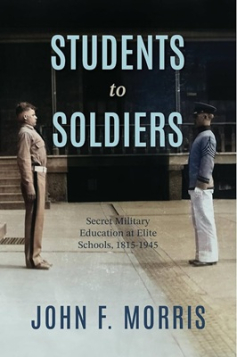The West Point Association of Graduates (WPAOG) has named the 2000 recipients of the Distinguished Graduate Award. This annual award has been bestowed upon those West Point graduates whose character, distinguished service, and stature draw wholesome comparison to the qualities for which West Point strives, in keeping with its motto: “Duty, Honor, Country.” The 2000 Distinguished Graduate Award Recipients are:

President Fidel V. Ramos ’50
A distinguished soldier who began his military career as an infantry platoon leader in the Philippine Counter-Insurgency campaign, then fought in both Korea and Vietnam and rose to become Chief of Staff of the Philippine Armed Forces; an architect of peace whose dynamic leadership stabilized a troubled country; a nation builder whose every action exemplified the words of the West Point Motto: Duty, Honor, Country; and a President whose steadfast dedication to the principles of democracy and faith in the Philippine people dramatically reversed a stagnant economy, Fidel Valdez Ramos has served his country with distinction and integrity over an active career spanning five decades.
Read More
General Ramos graduated from West Point in 1950 and then attended graduate school at the University of Illinois, where he was awarded a Master of Science degree in Civil Engineering in 1951. Returning to the Philippines, he served as an infantry platoon leader with the Second Battalion Combat Team, Philippine Army, during the counter-insurgency campaign. In 1952, he joined the 20th Battalion Combat Team as an infantry reconnaissance platoon leader with the Philippine Expeditionary Force in Korea. For the next ten years, he held positions of increasing responsibility in command and staff assignments in the Philippine Army, culminating in his appointment to command the First Special Forces Group (Airborne), a position he held for three years. In 1966 Fidel Ramos joined the First Philippine Civic Action Group in Vietnam as Chief of Staff. In 1968, he was named Presidential Assistant on Military Affairs, and in 1970 he assumed command of the 3rd Infantry Brigade, Philippine Army.
A year later, General Ramos was appointed Deputy Chief of Staff for Home Defense, Armed Forces of the Philippines. In 1972, he was named Chief, Philippine Constabulary, Philippine Armed Forces, a position he held for fourteen years. Concurrently, in 1975 he was appointed to the position of Director-General of the Philippine Integrated National Police. In 1981, Fidel Ramos was selected to be Vice Chief of Staff of the Armed Forces of the Philippines. He remained in that assignment for five years, the last two as Acting Chief of Staff.
These bare facts of General Ramos’ senior military assignments do not address the many years of political turmoil and instability, government corruption, and personal danger that he faced during President Marcos’ presidency.
In recognition of his outstanding leadership and courage — attributes that impelled him to play a paramount role in returning democracy to the Philippines, he was named Military Hero of the Peaceful People Revolution. This brief but momentous chapter in his military career led to Fidel Ramos’ assignment as Chief of Staff of the Philippine Armed Forces and two years later, his appointment as Secretary of National Defense.
In June 1992, General Ramos was elected 12th President of the Republic of the Philippines. He inherited a nation in the midst of a deepening crisis. Prolonged political instability, exacerbated by mounting casualties from attacks by Moro secessionists, military rebels, and terrorists; a poor and shrinking economy; a failing infrastructure; and a population disillusioned by the unfulfilled promises and high hopes generated by the overthrow of President Marcos all contributed to a sense of despondency that gripped the country.
President Ramos saw all of these problems as challenges. He understood that with proper motivation, strong and optimistic leadership, and a willingness to listen to the Philippine people, great strides could be made.
During his six-year term of office, remarkable gains were made by the Philippines in revitalizing the economy, repairing the infrastructure, and establishing peace with dissident factions of the country.
Promoting the principles of People Empowerment and Global Competitiveness, President Ramos never lost sight of the need to preserve and protect the democratic process in politics.
Fidel Ramos turned his attention to transportation, which was totally inadequate to the Nation’s needs in 1992. Through his energetic efforts, land, sea, and air facilities were upgraded; new bridges and roads were built to facilitate movement of goods to market; inter-island ferries were established; and rail transportation was improved, including intercity light rail.
President Ramos challenged the national long distance monopoly in communications, opening the field to competitors, and providing for cellular and home telephone service unavailable to the average Philippine citizen in 1992.
In 1991, the growth rate of the Philippine economy was a flat one percent and contracting. During the six years of the Ramos administration, the growth rate of the Gross National Product was 5.5%, peaking at 6.9% in 1996.
President Ramos fully understood that political stability was the key to the success of his ambitious economic and social programs. As a priority task, he was determined to make a just and enduring peace with the parties at odds with the government. These included the military rebels and the Moro National Liberation Front. By 1996, a formal peace agreement had been reached with both parties.
President Ramos and Nur Misuari, the Chairman of the Moro National Liberation Front, received the 1997 Felix Houphouet-Boigny Peace Prize, the first time this prize had been awarded to an Asian nation.
Fidel Ramos always kept close to his people. In 1997 alone, he made 70 provincial visits and held 18 regional cabinet meetings.
The Philippine recovery during 1992-1998 was dramatic. No small part of this effort was the comprehensive social program introduced by President Ramos. The Social Reform Agenda addressed long-standing problems of health, education, skills training, housing, aid for the handicapped, agrarian reform, and equal opportunity. The average family income grew more during President Ramos’ administration than in the previous twenty years.
Fidel Ramos pushed for the deregulation of key industries, liberalization of the economy, privatization of public entities, and the encouraging of foreign investment.
Among his many decorations and honors, General Ramos has been awarded the Philippine Military Merit Medal (with Spearhead), the Distinguished Service Star (with Silver and Bronze Anahaw leaf), the Military Commendation Medal (First Bronze Equilateral Triangle), the Philippine Legion of Honor (Degree of Commander with Third Bronze Anahaw Leaf), the Distinguished Conduct Star, and the United States Legion of Merit (Degree of Commander). He has received honorary degrees and awards too numerous to be listed.
Throughout a lifetime of military and public service, Fidel Ramos has demonstrated resolute courage, peerless leadership, and unswerving devotion to duty. Over the fifty years since he graduated from West Point, he has lived by the ideals expressed in the West Point Motto: Duty, Honor, Country.
Accordingly, the Association of Graduates takes great pride in presenting the 2000 Distinguished Graduate Award to Fidel Valdez Ramos, USMA Class of 1950.
John A. Hammack
Chairman and CEO
Dr. Buzz Aldrin ’51

A distinguished airman, scientist, astronaut, and patriot, Dr. Buzz Aldrin has left an indelible mark, not only on the history of his country, but also on that of the world. In a career spanning nearly five decades, the incomparable measure of his achievements has been demonstrated in countless ways. His exploits as an astronaut have earned him international renown, and his current activities continue to build and burnish his reputation. As a leader in the scientific community, he inspires his fellow citizens to look to the future, set their goals high, and strive for greatness in advancing our Nation’s exploration of the frontiers of space. He is a living exemplar of the principles expressed in the motto of the United States Military Academy: Duty, Honor, Country.
Read More
After graduating third in his Class of 1951, Dr. Aldrin earned his Air Force pilot’s wings and soon found himself flying Sabre Jets in the Korean War. In that conflict, he demonstrated his skill and bravery by completing 66 combat missions and downing two MIG-15s, and in recognition of his achievements he was awarded two Distinguished Flying Crosses and three Air Medals.
During the decade after his return from Korea, Dr. Aldrin served as a gunnery instructor pilot at the Fighter Weapons School, attended the Squadron Officers’ School, was the aide to the Dean at the Air Force Academy, flew Super Sabres with the 22nd Fighter Squadron in Germany, and earned a doctorate in Astronautics at the Massachusetts Institute of Technology, where he wrote a doctoral thesis on orbital rendezvous that developed techniques which would prove crucial to the future success of the Gemini and Apollo programs.
In October 1963, the National Aeronautics and Space Administration selected Dr. Aldrin as one of its early astronauts. After completing a training program that was both physically and mentally demanding, he began receiving operational assignments, first as a member of the back-up crew for the two-man Gemini 9 mission in May of 1966 and then as the pilot of the Gemini 12 mission in November. It was during the latter mission that Dr. Aldrin conducted the first satisfactory demonstration of man’s ability to work outside a space vehicle. As a fellow astronaut put it, “He invented the art of working in space.”
This was, however, only one of numerous innovations, and he accomplished the next in short order as the back-up command module pilot for Apollo VIII, the first flight around the moon. During that mission Dr. Aldrin significantly improved operational techniques for star display in astronautical navigation.
Finally, in 1969 he was named the lunar module pilot for Apollo XI, which NASA had selected to make the first landing on the moon, and on the 20th of July, while the largest worldwide television audience in history looked on, Neil Armstrong and Dr. Aldrin made their heroic and historic moonwalks. This scientific triumph, one of the most memorable events of the 20th century and the fulfillment of President John Kennedy’s challenge and pledge to the American people, represented the epitome of the Nation’s scientific capabilities and established its preeminence in the exploration of space.
Upon his departure from NASA in 1970, Dr. Aldrin, who was by then a Colonel, became the Commandant of the Air Force Test Pilot School, and he retired from the Air Force in 1972. Since then, as the head of Starcraft Enterprises and Starcraft Boosters, Inc., Dr. Aldrin has remained at the forefront of efforts to ensure that America continues to have a leading role in manned space exploration. As part of his lifelong commitment to this goal, he has created a master plan for a series of missions using a concept he developed called “The Cycler,” which is a spacecraft system that remains in perpetual orbit between Earth and Mars. He has also proposed reusable interplanetary space vehicles, a cost-effective solar power station on the moon, and a permanent space station whose design was patented in 1993.
In addition to all of his other accomplishments, Dr. Aldrin has authored or co-authored three books related to space exploration, Return to Earth, an autobiography; Men From Earth, a recounting of the United States-Soviet race to the moon; and Encounter With Tiber, a science-fiction novel designed to stir the imagination of the young and encourage their pursuit of the space sciences. Beyond the three books, he has also written dozens of articles about space-related topics. He participates in many organizations worldwide, including the National Space Society, that aim to develop future space programs and space education. Finally, his interest in American youngsters is manifest in his endorsement of two educational computer software programs for children.
Dr. Aldrin’s highest American awards and decorations include the Air Force Distinguished Service Medal, the NASA Distinguished Service Medal, the NASA Exceptional Service Medal, the Air Force Legion of Merit, and the Presidential Medal of Freedom. Eleven foreign countries have also accorded him high honors, and six colleges and universities have granted him honorary doctorates.
Dr. Aldrin has shaped his life in accordance with the ideals expressed in West Point’s motto. A man of indomitable spirit, he has faced an extraordinary array of obstacles and challenges during his career. But his courage and enthusiasm, his imagination and intellect have always prevailed. He has fought for his country in war and expanded its knowledge in peace. He has walked where only one other has walked, and his deeds, words, and works have served to inspire generations of his fellow citizens to strive for higher, greater achievements.
Dr. Aldrin’s Howitzer entry remarked that “he should make a capable, dependable, and efficient officer in the U.S. Air Force.” This has turned out to be a vast understatement of the case. He is a truly great American, and accordingly, the Association of Graduates takes great pride in presenting the 2000 Distinguished Graduate Award to Dr. Buzz Aldrin, USMA Class of 1951.
John A. Hammack
Chairman and CEO

GEN (R) Frederick M. Franks, Jr. ’59
As a distinguished military visionary and courageous combat commander, Frederick M. Franks, Jr., has rendered extraordinary service to the Nation, to the United States Army, and to his fellow soldiers. Throughout a military career of more than three decades, Fred Franks has exemplified steadfast devotion to the principles expressed in the motto of the United States Military Academy — Duty, Honor, Country.
Read More
Fred Franks graduated from the Military Academy in 1959. After attending Armor Basic, Airborne, and Ranger training, he joined the 11th Armored Cavalry Regiment in Germany, first leading an armored cavalry platoon and later commanding an armored cavalry troop.
Thereafter, his career assignments alternated between armor commands, where his superb leadership skills and tactical competence would become manifest, and key staff tours, which ultimately would prepare him to address the ways in which changes in technology would affect the warfighting doctrine of the Army of the future.
In 1963, he returned to the United States to attend the Infantry Officers Advanced Course and, afterward, graduate school at Columbia University. There he earned two master’s degrees in preparation for his assignment as an instructor at West Point. Following his tour at West Point, he rejoined the 11th Armored Cavalry Regiment, now in Vietnam, serving as Operations Officer of the 2nd Squadron.
In a period of intense combat, Fred Franks forged a distinguished record of valor, earning the Silver Star, Distinguished Flying Cross, the Bronze Star with V Device, forty-three Air Medals, and two Purple Hearts. While fighting in Cambodia he was severely wounded, and after a series of unsuccessful surgeries, lost the fight to save his left leg, which was amputated below the knee.
Where lesser men might have opted to transfer to a non-combat branch or retire, Fred Franks fought to stay in the Armor. Eventually he won this battle and returned to the line.
The following decade brought him duty with the Army Staff in the Pentagon, command of the 1st Squadron, 3rd Armored Cavalry Regiment at Fort Bliss, service in the Office of the Army Chief of Staff, a year at the National War College, high-level positions in the United States Army Training and Doctrine Command, and, finally, command of the 11th Armored Cavalry Regiment, now assigned to the East German frontier as the V Corps covering force.
Following promotion to brigadier general, in 1984, his flag-level assignments included Commanding General, Seventh Army Training Command, Deputy Commanding General, United States Army Command and General Staff College, and Director of Operational Plans and Interoperability (J-7), where he effectively integrated, for the first time, all joint staff operational planning, interoperability and warfighting functions within a single directorate of the Joint Staff, resulting in significant increases in the joint warfighting capabilities of our Nation.
In 1988, General Franks again returned to Germany to command the 1st Armored Division, and a year later he assumed command of the VIIth United States Army Corps.
In early November 1990, General Franks was ordered to deploy the Corps to Saudi Arabia to join the international coalition preparing to drive Iraqi forces from Kuwait; and on 24 February 1991, the Desert Storm land assault began, with VII Corps making the main attack.
In 100 hours of rapid maneuver and combat, VII Corps fought and won a great battle in the desert sands of southwest Asia. Under General Franks’ brilliant leadership, it engaged and destroyed fourteen Iraqi divisions and anchored the liberation of Kuwait, while losing fewer than 100 soldiers to enemy action. This feat of generalship is unmatched in the annals of modern warfare.
When General Franks returned to the United States after Desert Storm, he received his fourth star and was assigned as Commanding General of the United States Army Training and Doctrine Command. Under his visionary leadership, the foundations for the Army’s warfighting doctrine were redefined in the landmark revision of FM 100-5, Operations. He also published the United States Army pamphlet 525-5, “Concepts For Future Land Warfare,” which advanced the strategy for building a force-projection army through doctrinal change. Finally, he developed battle laboratories for experimentation methodology that supported digitalization.
Although General Franks retired from active duty in 1994, he continues to contribute. Noteworthy has been his instruction of senior-level commanders in the U.S. Army Battle Command Program and his appointment as Visiting Scholar in the newly formed Center for the Professional Military Ethic at West Point.
The history of organized warfare is replete with examples of great soldiers whose feats were singular in scope. Some were brilliant commanders. Others were military doctrinal visionaries. General Franks is one of those rare soldiers who was both leader and visionary. Accordingly, the Association of Graduates takes great pride in presenting the 2000 Distinguished Graduate Award to Frederick M. Franks, Jr., Class of 1959.
John A. Hammack
Chairman and CEO



